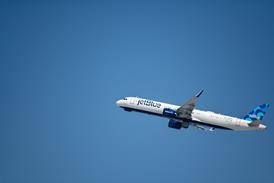With the completion of several infrastructure milestones in 2007, Boeing inched closer to its planned 2009 demonstration to intercept and down a representative ballistic missile using the US military's Airborne Laser missile defence system.
The ABL platform, a modified Boeing 747-400F, includes a Northrop Grumman-built six-module megawatt-class chemical oxygen iodine laser (COIL) in the back half of the aircraft, and a Lockheed Martin-supplied beam/fire control system and nose-mounted turret in the front, along with beacon illuminator lasers supplied by Northrop. Prime contractor Boeing is providing the battle management system.
 |
|---|
© Boeing |
The US Air Force's primary goal for the ABL is to destroy all classes of ballistic missiles in their boost phase from a distance of hundreds of kilometres, according to Boeing, although the system may also be useful for destroying air-to-air, cruise and surface-to-air missiles.
Boeing is currently installing the COIL in the 747 at Edwards AFB, California, following the inspection and refurbishment of high-energy laser components previously tested in the laboratory the completion of technical drawings for the laser installation and modification of the ABL hangar at Edwards to support future ground testing.
Low-power laser tests completed last August proved the viability of the ABL's infrared sensors to find an instrumented target board flying on a USAF Boeing NC-135E "Big Crow" test aircraft. The ABL's battle management system also issued engagement and target location instructions to the beam/fire control system, which then acquired the target and fired its two solid-state illuminator lasers to actively track the target and measure atmospheric conditions. In place of the COIL, a low-power surrogate laser was pointed at the NC-135E to simulate target engagement.
Once laser installation work has been completed around mid-2008, Boeing says the ABL team will begin system-level ground and flight tests, leading to the intercept test in 2009.
Source: Flight International























